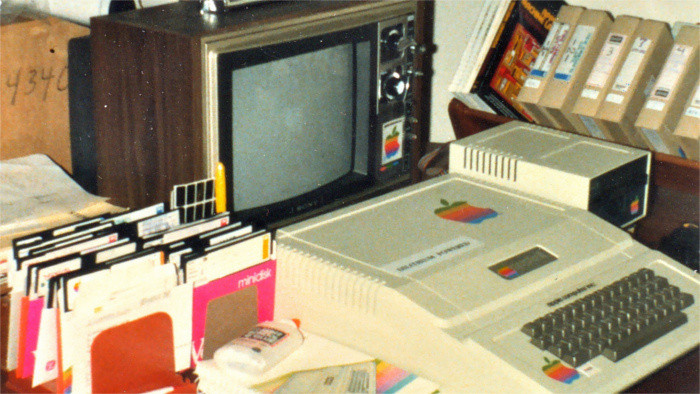On February 13 1992, Czechoslovakia became the 39th country in the world to connect to the internet in lecture room 256 at the Czech Technical University (ČVUT) in Prague.
The connection was made using a leased fixed telephone circuit that led from the CTU campus to the computer centre of Johannes Kepler University in Linz, Austria. The connected device was an IBM 4341 mainframe with a speed of 9.6 kilobytes per second (kbit/s).
"Later, the Internet was also introduced at the then Faculty of Electrical Engineering of the Slovak University of Technology. It was a fixed-line internet, i.e. a permanent connection, and the first domains with the .sk extension began to appear. The first households started to connect to the Internet about three years later, here it was a dial-up connection via a telephone line and it was introduced by the then Slovenské telekomunikácie, š. p.," Ondrej Macko, editor-in-chief of touchIT.sk magazine.
According to him, however, at that time there was very little content available on the Internet and even less domestic content, i.e. from Slovakia. "There was literally nothing to look at, it was more about professional communication through e-mails. The first web presentations were aimed at presenting the university world, commercial offerings were added, and car companies were very active from the beginning. The forerunner of today's social networking sites were community groups referred to as BBSs," Macko explained.
Back then, people needed a landline phone, a modem and a computer to connect to the Internet at home. Connection speeds were around 11.4 kbit/s, later rising to 56 kbit/s. "You could even use two telephone lines in parallel and double the connection speed. However, this cost double the amount for the connection. In Slovakia, for a certain period of time, there was a promotion that from 7 p.m. to 6 a.m. in the evening and throughout the weekends, you were connected for only one pulse, which cost 2.50 Slovak crowns at that time. This was a very good offer and many people took advantage of it. At that time, night-time web browsing, which is still popular today, was also created," he told TASR.
The switch to invoicing for the volume of data transferred started to be used only later. For households, it was for a long time an amount solely according to the connection time, and therefore a low connection speed was a disadvantage. The so-called ADSL line with a speed of 128 kbit/s was considered a miracle, but it was still a dial-up connection.
"This is hardly a usable speed for today's multimedia sites, but it can be lived with. One of the first people to have a fixed line at home was Jaro Filip, the then internet populariser and artist," Macko explained.
Unlike today, the internet was a very secure platform, not even affected by the widespread computer viruses of the time. These were spread via floppy disks at that time. In the beginning, the Internet was more for enthusiasts. "This is no longer the case today, practically everyone of working age has the Internet. It's our TV, a way of communicating, playing games, working remotely, social networking, online shopping, but it's also the basis for a new virtual currency. That is why the Internet has become a platform for cyber criminals. Such criminal activity is extremely profitable and much harder to detect," Macko told TASR.
According to him, the future of internet development lies in the fact that it is moving significantly to high-speed, low-latency wireless connectivity, for example, using 5G networks. "This stage of building modern networks is currently in a tumultuous development in Slovakia. Overall, however, we are the country with the fastest internet connection in Europe. However, the fastest internet is outside Europe is in South Korea. Another development is that there is a need to transmit more human senses over the Internet. Today, it is not a problem to hear and see over the Internet - it is people's ears and eyes. But with the other senses it is more difficult - how to transmit smell, feel, taste, touch and so on? Here there are the first indications that this can be done with a special tool that transmits, for example, hand touches even at a distance. There are already experiments with scent transfer, for example cosmetic companies are interested," Macko summarized.
However, he stressed that, as the pandemic has shown, education has a very important role in developing the use of the Internet. What is currently available, he added, is inefficient and not conducive to the goal of raising an educated generation. "The room for improvement is huge and it has underlined the role in the focus of computer science teaching in schools in our country," Macko said.
Source: TASR

